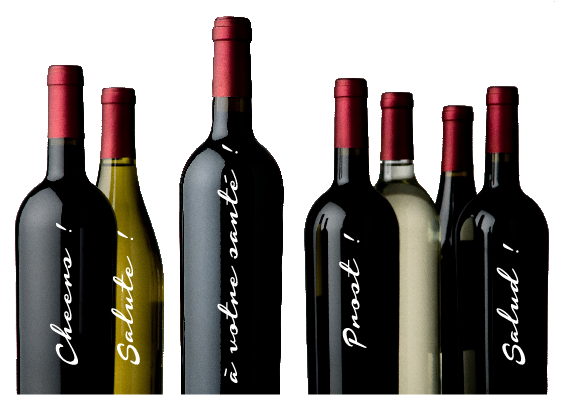France
-
D. MILHADE & FILS
Bordeaux www.milhade.fr
The D.Milhade & Sons company was founded in 1938 by Damase Milhade who built up and brought out a wine trade business in Galgon. The company, named today “Ets. Milhade Sa” markets all the appellations from the Bordelais vineyard with a predominant position in the Libournais vintages. They distribute exclusively the Milhade’s property wines.
Quality is the major concern. All the latest wine-producing techniques are at work so that you can be satisfied and provide you with authentic up-market wines.
-
DOMAINE DU PERE CABOCHE
Southern Rhone www.jpboisson.com
The history of the domain goes back to at least 1652, when it was owned by the Chambellan family. This family also owned the property in 1777 when a daughter from the place married Louis Boisson and in this way connected the Boisson family with the property. The Boissons also worked as blacksmiths in the town and got from this the nickname "Caboche" (derives from the old Provencal word for horseshoe nails). This name was consequently chosen for the property (Domaine Pere Caboche).
Today the property owns 70 hectares and produces red and white Chateauneuf du Pape, Cotes du Rhone Villages, Cotes du Rhone and Vin du Pay de Vaucluse.
-
CHATEAU DAUGAY
Saint-Emilion www.chateau-daugay.com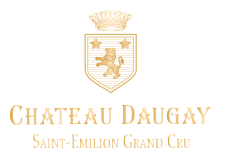
The modern era for Chateau Daugay begins in 1920 when the vineyard was purchased by the de Bouard family. If the de Bouard name seems familiar, it should, they are also the owner of Chateau ANGELUS and La Fleur de Bouard in Lalande de Pomerol. However, the estates dates back further, while the area was under vine in the 1700’s, the estate was created in 1807. The chateau was constructed not long after that in year 1816. Interestingly, for a period of time following World War 2, no wine was produced at Chateau Daugay. Instead the grapes were placed into the wine of Chateau Angelus. This practice lasted from 1946 until 1984. The wine making facilities were completely renovated in 1985. In 1985, with the new Saint-Emilion classification, Daugay separated from Angelus and in 2006 passed into the hands of Christian’s daughter, Helene, who now manages the estate. She applies the same winemaking methods used by her family for generations.
Today, Chateau Daugay is owned by Jean-Bernard Grenie. The wine making and vineyard management is consulted by Hubert de Bouard.
-
CHATEAU CARONNE SAINT GEMME
Haut-Medoc www.caronne-ste-gemme.com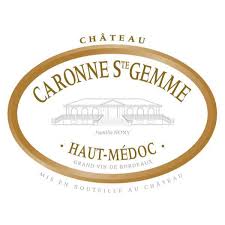
The vineyard was 1st reported in 1648 when a local Landlord, Denys de Mullet of La Tour St Lambert rented it to a farmer in exchange of wines produced. Caronne is derived from “Carona” for a local spring source, and Gemme a corruption of “James”.
In the middle-ages the locality was a parish on the grounds of a subsidiary to the Templar Commanderie at nearby Benon a few kilometres inland. Pilgrims on their way to Santiago di Compostella, having crossed the estuary from Blaye, would rest here before continuing their way across the Landes to the Spanish Border. The Parish was abolished during the Revolution and it is about this time that the 1st records of wine production at Caronne begin to emerge.
In 1900 ownership of Caronne passed to Emile and Eugene Borie. The sons of Eugene would later cede their shares to their uncle and purchase Ch Batailley and later Ducru-Beaucaillou whilst Emile’s descendance would remain sole owner of Caronne until this day. The property is now managed by Jean, little son of Emile and Francois, his nephew.
-
MARK HAISMA
Burgundy, France
Former Australian winemaker Mark Haisma left the comfortable life as wine maker on the cultured property Yarra Yerring in Australia to follow his heart and passion – Burgundy.
His passion for making a wine that expresses the purity of the fruit and further reflects the soil they are grown is what drew him to Burgundy. He makes wines that are bright and fresh and uses a “hands off” approach to create a pure expression of the terrior.
He is fast becoming one of Burgundy’s most sought after makers, mainly due to his wonderful wines but also as a consequence of the glowing reviews his wines are receiving from some of the world’s most respected critics.
Mark Haisma was named a “Top 25 Producers to Watch” by Tim Atkin.
-
MAISON CAMILLE GIROUD
Burgundy, France
In 1865, the enterprising young Camille Giroud founded the small négociant firm which carries his name. He married late, as did his son, so by the end of the 20th century the company was still being run by the founder’s daughter-in-law and her two sons. This producer was known for traditional, long-aged Burgundies.
It was acquired in 2002 by Ann Colgin and husband Joe Wender. They brought in young winemaker David Croix, turned to Becky Wasserman for direction, and undertook a major revamping of the winery, including the introduction of a wooden press for the red wines, open wooden vats for fermentation, use of little or no new oak and little racking. The winemaking represents a perfect blend of tradition and modern technology. A remarkable turnaround has occurred, and the wines are now much more supple and approachable.
-
LOU DUMONT
Burgundy, France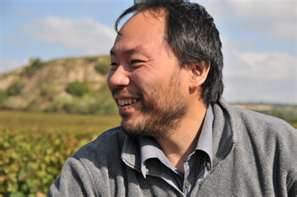
Maison Lou Dumont is a relatively new negociant house set up originally in Nuits Saint Georges before moving to Gevrey-Chambertin in 2000 by Koji Nakada and his Korean wife Jae Hwa Park. Koji has been a sommelier in Japan before pursuing his dream in Beaune learning and working with Cote d’Or domains.
Wine Making Style:
Using only natural yeasts, fermentations occur naturally, with minimal remontage (pumping over) if any, and very little punch downs. The fermentation takes place in steel tanks, but there still remain a few wooden tanks for experimental purposes. The wines then spend 12 to 24 months depending on the cuvee in oak, of which 15% is new for regional wines, 30% for village wines, 50% for 1er Crus and 70% for the Grand Crus.
-
DOMAINE MARC MOREY
Burgundy, France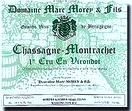
Domaine Marc Morey is located in the heart of the Cote d’Or, in the center of the village of Chassagne-Montrachet. Although the Morey family name can be traced back for more than five generations in Chassagne, it was in the 1950’s that Marc Morey established his domaine. He constructed the original cave beneath the family’s 100 year-old home and began vinifying his own wines. His daughter Marie-Jo and her husband Bernard Mollard are the current proprietors. They now own almost 10 hectares of villages, Premier and Grand Cru vineyards and have twice expanded the domaine and modernized the vinification equipment.
-
DOMAINE MONGEARD MUGNERET
Burgundy, France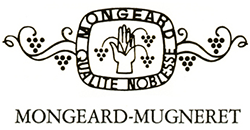
The village of Vosne Romanee entered in the Burgundy history in 1636. It was at the beginning of the 16th century that we first noted the name Mongeard in the registry. The Domaine Mongeard-Mugneret, renamed since 1945, now operates in the purist of the burgundy tradition vineyards from the Cote de Nuits to the Cote de Beaune, from Marsannay to the south of Dijon to Puligny-Montrachet. Vincent Mongeard, the son of Jean, who is as passionate as is ancestors, is committed not only to maintain and improve the family patrimony.
With all them most prestigious villages of the Cote: Gevery-Chambertin, Vougeot, Nuits Saint Georges and Savigny les Beaune, the property accounts for approximately 33 hectares, spread on 35 different appellations. The winery is in Vosne Romanee.
-
DOMAINE A.F. GROS (Anne-Francoise)
Burgundy, France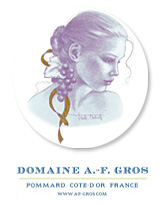
Domaine Anne-Francoise Gros was created in 1988 when her father, Jean Gros, retired and divided his property between Anne-Francoise and her brothers Michel and Bernard Anne-Francoise and her husband Francois Parent.
The Domaine was initially known under the names of Gros-Renaudot then Louis Gros, and after inheritance, Jean Gros. At the same time, Anne-Francoise acquired a domaine in Flagey-Echezeaux and later with her husband, Francois Parent, purchased a vineyard in Savigny-les-Beaune. Shortly thereafter, Francois added to the Domaine his own vineyards in Pommard that he inherited from his family. Being the 13th generation of winemakers, he continues to acquire knowledge and techniques that enable him to vivify his wines so that they express the typical character and complexity of the aromas of the Pinot Noir.
The Labels:
Because there was some confusion over the wines made by sisters Anne and Anne-Francoise, the latter decided to distinguish her label with various chalk portraits done by artist Maris-Paule Deville-Chabrolle. These beautiful faces are not of one single woman, rather they are a interpreted compilation of all of the woman in the family: the three sisters Anne-Francoise, Anne and Rosalie, their mother, and AF’s daughter Caroline!
DOMAINE PHILIPPE et VINCENT LECHENEAUT
Burgundy, France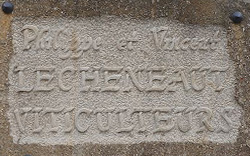
The Domaine was found by Fernand Lecheneaut in 1980. However, he died in 1986 and his sons, Philippe and Vincent, took over his vines. Until now, they have domaine’s holdings up to almost 10ha. The winery is operated in low yields, destalking, cool pre-fermentive maceration without using any herbicides or anti-rot spray and they have used almost exclusively organic treatments for their wines. Many of the vines are now 50 years old.
The wines are not racked in barrel. 30-50% new oak is used for village wines, 80-100% for premiers crus and 100% for grand crus. They buy most of the barrels from Francois Freres who provides selection of the best wood to the Domaine. Wines are without fining or filtration since 1988.
Italy
-
BROGLIA
Piedmont www.broglia.it
Broglia La Meirana is where the name Meirana connects to the story of Gavi itself. As a matter of fact the first document where the name Mairana appears is kept in the state Archives in Genova and there vineyards and chestnut woods on the spot called Meirana are mentioned.
This document, dated 971 A.D., confirms the vine growing and wine producing tradition of the area at the dawn of the story of the town of Gavi. The farm Piero Broglia was founded by Bruno Broglia and his son, Piero, in 1972. He was elected a Member of Parliament Novi Ligure constituency and also a member of the Parliament Committee.
In the Eighties at his estate La Meirana he started the research on the Cortese clones under the direction of Professor Scienza of Agricultural Science at the University of Milan. Three new clones have been selected and certified, which will be for the first time implanted in the new magnificent vineyards. The Gavi La Meirana was served on the Vatican table during the celebrations for the 25 years of Pope John Paul II’s pontificate and offered during the official banquets in the seats of several Italian Embassies.
-
BIBBIANO
Tuscany www.bibbiano.com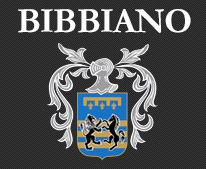
BibbianoBibbiano is located in the historic Chianti region, in the municipality of Castellina in Chianti, overlooking the Elsa Valley towards the castle of Monteriggioni. Cultivation of grapes in this area originated with the Etruscans, continuing well into the late-Latin era.
Inspired by this incomparable natural and human heritage, our family, owner of Bibbiano since 1865, continues to lovingly cultivate the vineyards and olive groves following a vibrant and modern family business tradition. In fact, today’s owners, Tommaso and Federico Marrochesi Marzi, are the fifth generation.
Surrounded by vast olive groves consisting of over three thousand trees, Bibbiano vineyards cover an overall area of about 25 hectares, at an altitude between 270 and 300 meters, distributed on the hillsides, with enviable exposureand excellent microclimate.
Our family has been a member of the Chianti Classico Wine Consortium since 1948.!
ORGANIC FARMING & CO2 ZERO EMISSIONS -
AZIENDA AGRICOLA PALAZZO
Tuscany www.aziendapalazzo.com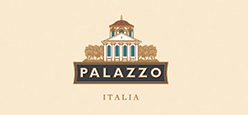
The Palazzo Estate, situated on the eastern slope of Montalcino, was bought by the Palazzo family in 1983. The vineyards, set in a splendid panorama, are exposed to the sun from dawn to sunset and are protected from seas breezes. The entire production, from the farming of the vines to the vinification, the ageing and refining, is carried out by the family.
-
BORTOLOMIOL
Valdobbiadene, Italy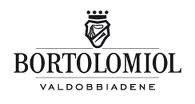
Documents from the mid 18th Century prove the existence of Bartolomeo Bortolomiol, the ancestor from whom today's family takes their name and calling to the production of wine. Bartolomeo spent his whole life growing grapes on the hillsides of Valdobbiadene, passing on to his descendents his love of the land and ability to get the best from it. His lesson was well learned by Giuliano Bortolomiol, the founder of today’s company and a man who dedicated his life to Prosecco with a passion for quality and unshakable belief in its potential.
Today it's Giuliano's daughters Maria Elena, Elvira, Luisa and Giuliana who have taken on this mission with their mother Ottavia and oenologist Gianfranco Zanon. Together they have invested a great deal of energy and resources into ensuring quality and maintaining the company's strong links to the land and its history.
USA
-
NAPA VALLEY
ST. SUPERY Founder, Robert Skalli, travels from his home in France to Napa Valley to pursue his dream of creating
prestigious wines in California’s Napa Valley and establishing a winery that rivals the French Chateau
wines.
Founder, Robert Skalli, travels from his home in France to Napa Valley to pursue his dream of creating
prestigious wines in California’s Napa Valley and establishing a winery that rivals the French Chateau
wines.In 1982, Robert Skalli purchases Dollarhide, in the northeastern hills of Napa Valley. Today, Dollarshide is home to the estate grown vineyards. In 1985, he purchased Rutherford and completes the estate winery in 1989.
The Skalli Family sells St Super Estate Vineyards and winery to CHANEL, Inc. offering them a unique opportunity to own a significant Napa Valley vineyard, expanding their wine portfolio which includes Chateau Canon and Chateau Rauzan Segla.
-
NAPA CELLARS
Napa Valley, California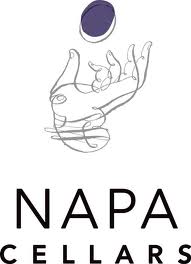
The Napa Valley stretches 35 miles from Carneros to Calistoga and within that distance there are a great number of Mesoclimates and Microclimates. According to the UC Davis Heat Summation Undex, Napa Valley has all four climate regions, allowing a diverse set of grapes to be grown. Napa Valley is world famous for producing incredible wines.
At Napa Cellars they aim to take advantage of the diverse vineyards climates for blending purposes. Year in and year out this allows to make consistent quality wine because they can pick and choose the best grapes for our blend. Additionally, by blending grapes from different climates, they can balance fruit flavors with tannin structure and acidity.
“Integrity, Commitment, and a Passion for Bringing the Pleasure of Wine to the Table” American Winery of the Year 2009 – “Wine enthusiast” Magazine
“The Winery Portfolio of the Year went to Trinchero Family Estates in St. Helena, California.” San Francisco International Wine Competition 2014
-
SYCAMORE LANE
California www.sutterhome.com
More than sixty years ago, Mario Trinchero, a young Italian immigrant with winemaking in this blood, left New York City and headed West to the Napa Valley where he hoped to build a better life for his wife, and their three children. Soon after arriving in California Mario and his brother John purchased a St Helena winery and together, they began building a dream.
Over the years, Mario and his family persevered, often struggling to make ends meet, but eventually, the Trinchero family became one o the greatest success stories Napa Valley has ever known. To honor their heritage and long history in the Valley, the family established Trinchero Napa Winery dedicated to producing luxury-class single-vineyard wines.
Sycamore Lane is an on-premise only wine designed exclusively to meet the unique needs of the on-premise proprietor in the United States. Available in most popular varietals, the wines are made from grapes grown only in California’s premier vineyards. Crafted by Trinchero Family Estate using generations of winemaking expertise and state-of-art technology, these wines are lovely and ripe and with a traditional taste and feel, crafted to complement a variety o foods and flavors.
“The Winery Portfolio of the Year went to Trinchero Family Estates in St. Helena, California.” San Francisco International Wine Competition 2014
-
DIAMOND CREEKS
Calistoga, USA www.diamondcreeksvineyards.com
Founded in 1968, Diamond Creek is California's first exclusively Cabernet Sauvignon Estate Vineyard. Visionary pioneer Al Brounstein defied modern conventions and planted Bordeaux varietals on secluded Diamond Mountain. The three vineyards produce a small amount of long-lived wines that are elegant with great depth and richness, honored and cherished by connoisseurs the world over. Taste the differences imparted to the wine by the distinct soils and micro-climates of Diamond Creek Vineyards.
-
SHAFER VINEYARDS
Napa Valley www.shafervineyards.com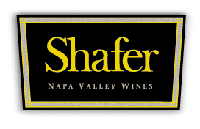
Shafer Vineyards traces its beginnings to 1972 when John Shafer left a 23-year career in the publishing industry and, with his family, moved to the Napa Valley to pursue a second career in wine. After purchasing a 210-acre estate in Napa Valley's Stags Leap District, the Shafer family faced the arduous task of replanting the existing vineyards, which dated to the 1920s, and terracing the steep and rocky hillsides, eventually expanding vineyard acreage to its current 50 acres.
The first Shafer Cabernet became a benchmark, winning the acclaimed San Francisco Vintners Club taste-off upon release and, over a decade later taking first place in an international blind tasting held in Germany, where it outranked such wines as Chateau Margaux, Chateau Latour and Chateau Palmer.
“Shafer is the poster boy for impeccable wine quality year in and year out, offering examples of what a high quality, creative winery is capable of achieving even when vintage conditions are challenging. Since 1991, this has been the uncontested superstar of the Stags Leap appellation, and readers are unlikely to find a better Cabernet Sauvignon than Shafer’s Hillside Select, a better North Coast Syrah … than their Relentless, or a finer non-malolactic Chardonnay than their Red Shoulder Ranch. All of this is due to the extraordinary team of winemaker/vineyard manager Elias Fernandez and father and son, John and Doug Shafer.” - Robert Parker’s Wine Personalities of the Year – 2004
-
CHATEAU MONTELENA
Napa Valley www.montelena.com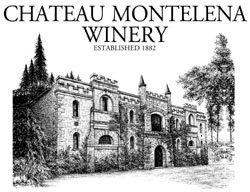
Chateau Montelena's rich history began on a chilly fall morning when Alfred L. Tubbs spaded over and inspected the soil where he thought of planting estate vineyards. He'd heard the Napa Valley was the best place to grow grapes in California. A deal was struck and in January of 1882 the San Francisco entrepreneur owned 254 acres of rugged land just two miles north of Calistoga at the base of Mount Saint Helena. The soils are well drained, stony and loose – perfect for the vine cuttings he would plant.
Winemaking at the Chateau came to an end with prohibition. After prohibition was repealed, the Tubbs family continued to harvest the vineyard, making some wines and selling grapes to other wineries and home winemakers until they sold the winery in 1958.
In 1976 Chateau Montelena put California at the forefront of the wine world. That year a who's-who of the French wine and food establishment gathered for a grand tasting at the Inter-Continental Hotel in Paris. Four white Burgundies were tasted against six California Chardonnays. When the scores were tallied, the French Judges were convinced that the top-ranking white wine was one of their own. In fact, it was Chateau Montelena's 1973 Chardonnay, rated above all other wines.
-
HEITZ CELLARS
Napa Valley www.heitzcellar.com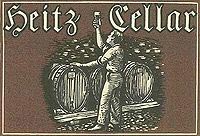
When Heitz Cellars opened in 1961, the Napa Valley had fewer than twenty wineries. Today there are more than two hundred. The original winery on St. Helena Highway is still open to the public as a sales and tasting room for visitors and is a glimpse into the origins of Heitz Cellars.
Within a few years Heitz Cellars had outgrown the original premises and purchased the present 160-acre residence and ranch on Taplin Road, a narrow fold in the hills just east of St. Helena. The home property was originally developed as a vineyard and winery in the 1880s by the Swiss-Italian family of Anton Rossi. The beautiful old stone cellar built in 1898 has made the transition through time and the Heitz family continues to age fine wines within, carrying on the tradition of the art of fine wine making in the Napa Valley.
Heitz Wine Cellars has also expanded to include 350 acres of prime vineyards situated in the heart of the Napa Valley. From 1985 onward these vineyards have produced most of the grapes for Heitz wines, except the two legendary vineyards designated Cabernet Sauvignons from "Martha's Vineyard" and "Bella Oaks Vineyard."
-
SEBASTIANI VINEYARDS
Sonoma County www.sebastiani.com
The history of Sebastiani Vineyards dates back to 1825. In that year, the Franciscan fathers of nearby mission San Francisco Solano, assisted by local native Americans, first cleared and planted land for their vineyards.
These vineyards are among the oldest vineyard sites in northern California. They were acquired in 1904 by Samuele Sebastiani, the founder of our family winery, who immigrated from the wine producing region of Tuscany, Italy in 1895.
Sebastiani search Sonoma County far and wide to locate grape growers that observe the same viticultural methodologies and practices as implemented in their own vineyards. Canopy management, vine nutrition, natural pest control versus chemical control, clonal selection, rootstock selection and deficit irrigation are all vital components in growing high quality grapes. Many of our most prized vineyard blocks are from "Old Vines" that are 30-110 years old, tended by the second, third and even fourth generations of the original owners.
Germany
-
WEINGUT S.A. PRUM
Mosel-Saar-Ruwer, Germany
S.A. Prum, located in Wehlen village of mid-Mosel River valley, is praised by connoisseurs as the temple of German wine. With family history dates from 1156, the Prum winery was founded JodocusPrum in 1842. Today the winery is run by RaimundPrum who personally cultivates his wines every step of the way.
The overwhelming portion of the vines is ungrafted or autochthon Riesling of which up to 70% are situated on steep inclines. Nature itself helps keep production down due to limited amount of water on these barren slopes. In the absence of irrigation, the Riesling vines’ roots extend deeply into the soil, as much as nine meters. Each vine draws water from extremely rich Devonian slate below which lends its unmistakable mineral flavor, pure terroir taste. The extreme slope inclination of up to 45% precludes machine cultivation and obliges viniculture and harvest to be done in traditional handcraft manner.
The wines are aged in “Fuderfassen” which are large 1000 liter capacity barrels made from wood from nearby forests and are as much as 50 years old. Because of their age, they impart no wood taste to the wine but provide optimal storage and contribute to the evolution of wines.
Spain
-
BODEGAS REMIREZ de GANUZA
SPAIN
Founded in 1989, Bodegas Remírez de Ganuza was born as a personal commitment of its founder, Fernando Remírez de Ganuza. Since the beginning, the idea has been the same: to make an exhaustive selection of the grape and to intervene at least in the process of making the wine to be as faithful as possible to the vintage as well as to the vineyard. The activity that Fernando developed in the decades of the seventies and eighties in the area of Rioja Alavesa, dedicated to the purchase and sale of old vineyard, allowed him to select the most appropriate farms in the region to develop his project..
Throughout the years, elements have been incorporated into the elaboration and aging process that make Remírez de Ganuza a pioneer winery in the application of new techniques. The innovation since the beginning has been a constant, since year after year improvements are incorporated to raise the quality of the wines. Elements such as the selection table, the cold chambers or the use of new barrels for the aging of the wines, may be common in other wineries of international prestige, but they were not at the time they were applied. Other elements such as the bag used in the Trasnocho extraction or the machine to wash the grapes with their own must, are examples of the continuous innovation and search for quality carried out in Remírez de Ganuza.
In 2010 José Ramón Urtasun joins the project initiated by Fernando, thus beginning a new stage for Bodegas Remírez de Ganuza.
New Zealand
-
GOLDWATER ESTATE
Marlborough www.goldwaterwine.com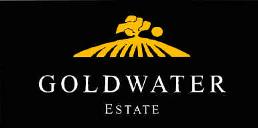
Goldwater Estate was established by Kim and Jeanette Goldwater in 1978 when they pioneered winegrowing on Waiheke Island with the planting of the Island's first vinifera vineyard. The success of their wines is demonstrated by the fact that there are now more than thirty vineyards on Waiheke Island. In 1992 the Goldwaters made their first wine in Marlborough and are now equally well known for their outstanding New Dog Sauvignon Blanc (previously Dog Point) and Roseland Chardonnay from this exciting region.
South Africa
-
SPIER
SOUTH AFRICA
Established in 1692, the family who owns Spier would like to leave a legacy for future generations. This influences the way Spier is managed and does business as well as their approach to the environment, supporting the community, local producers and contemporary South African artists.
Spier complies with the Wine of Origin system by South Africa, which is one of the most advanced traceability systems in the world, to ensure food safety. It traces the bottle of wine all the way back to the vineyard Spier invests in education that empowers our communities to make a positive difference – these initiatives are called Growing for Good.
“Not only do you need to grow as a business, you need to create shared value for your staff and communities and make sure you make a positive impact on your environment. Yes, we grow grapes, but we also grow with people and create agents of change.”
- Andrew Milne, Chief Executive Officer, Spier
By choosing Spier, you are supporting Spier’s ‘Growing for Good’ learning initiatives

